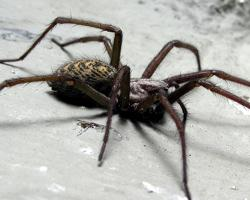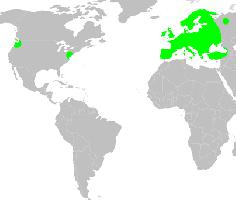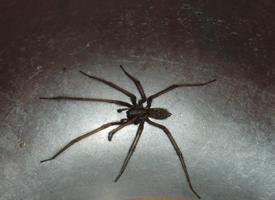
Poids et mesures
| Longueur | de 12 à 18 mm |
|---|
Statut de conservation
| Intrépide |
Description de l'animal
The Giant House Spider (Eratigena atrica), previously classified under the genus Tegenaria, is a species of spider renowned for its significant size and common occurrence within human dwellings, particularly in Europe and North America. This species is a fascinating example of arachnids that have adapted to urban environments, often evoking a mixture of intrigue and unease among human observers.Physical Description:
The Giant House Spider is distinguished by its sizable body and long legs, making it one of the larger spider species encountered in homes. Adult males can have a body length of about 1.2 to 1.8 centimeters (0.47 to 0.71 inches), while females are generally larger, with a body length ranging from 1.8 to 2.5 centimeters (0.71 to 0.98 inches). When including their legs, they can span up to 7.5 centimeters (approximately 3 inches) across. Their coloration is typically a mottled brown, providing them with excellent camouflage against wood and bark, their natural habitat. The abdomen exhibits a pattern that can vary but often includes several chevrons pointing towards the rear.
Habitat and Distribution:
Originally from Europe, the Giant House Spider has been introduced to other parts of the world, including North America, where it has become well-established. It prefers temperate climates and is commonly found in and around human habitations. These spiders are known to inhabit the dark and less disturbed areas of homes, such as basements, attics, and wall crevices, where they can spin their webs and hunt in peace.
Behavior and Diet:
The Giant House Spider is a nocturnal hunter, relying on its speed and agility to catch prey. Its diet primarily consists of insects and other small arthropods. The spider constructs a sheet-like web with a funnel-shaped retreat where it hides during the day and waits for prey. Its web is not sticky; instead, the spider relies on its quickness to rush out and capture any prey that touches the web.
Reproduction:
The mating season for Giant House Spiders occurs in the late summer and early autumn. Males wander in search of females and, upon finding one, perform a courtship dance to avoid being mistaken for prey. After mating, females lay eggs in a silk sac, from which spiderlings emerge. The females can be quite protective of their egg sacs.
Human Interaction:
Despite their daunting size, Giant House Spiders are not considered dangerous to humans. They possess venom that is effective against their prey but is not harmful to humans except in rare cases of allergic reactions. In fact, these spiders are beneficial as they help control the population of pests such as flies and mosquitoes within homes. However, their large size and rapid movements can be startling, leading to a common fear or unease among people.
In conclusion, the Giant House Spider is a remarkable species that thrives in close proximity to humans. Its presence in homes is a testament to its adaptability and the complex relationships between humans and the natural world. While they may evoke fear in some, these spiders play a crucial role in controlling insect populations, making them an interesting and beneficial component of their ecosystems.
Carte de répartition

Animaux similaires
Nouvelles photos d'animaux
Top 10 des animaux
- Dolphin gull (Leucophaeus scoresbii)
- Diana monkey (Cercopithecus diana)
- Moustached guenon (Cercopithecus cephus)
- Galápagos tortoise (Geochelone nigra complex)
- Japanese macaque (Macaca fuscata)
- Russian tortoise (Testudo horsfieldii)
- Stone loach (Barbatula barbatula)
- Greek tortoise (Testudo graeca)
- Common flying dragon (Draco volans)
- Vendace (Coregonus albula)
